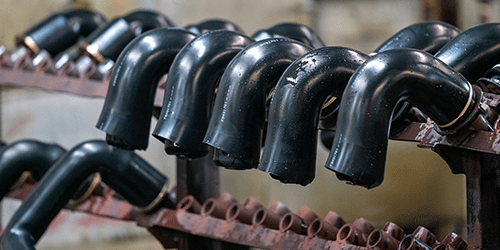Did you know that the foam rubber and sponge rubber are quite different from each other? The two terms are often used interchangeably and unless you work in the rubber industry, the sponge used for cleaning the dishes may seem quite similar to the foam mattress pad. Both are squishy and soft, right?
However, experts in the rubber industry would laugh on those who think foam and sponge are one and the same. For technical buyers, choosing the right material is important as it may also mean meeting requirements for flame, smoke and toxicity (FST)
What makes foam rubber and sponge rubber so different from each other? This article answers the question.
For foam rubbers, a blowing agent, normally a chemical that produces gas is used to make small bubbles inside of a liquid mixture. This mixture consists of polyisocyanates, polyols, water and additives such as fillers, coolants and flame retardants.
The polyisocyanates and polyols in foam rubber when mixed with water create an exothermic (heat-generating) reaction. Specific combinations or types of liquid polymers can be used for creating rigid or flexible foam rubbers.
During polymerization, polyols and polyisocyanates molecules form a 3D structure by cross-linkage. Foaming can be controlled by adjusting water amount or by use of surfactants.
Blowing agents are very important in the process of foam rubber production and without them foam rubber cannot be made. Flexible foams mostly use CO2 gas formed from the reaction of water with polyisocynate.
Sponge rubber is further divided into two main types namely open-cell and closed-cell. Open-cell sponge rubber consists of interconnected and open pockets that allow water, air and other chemicals to pass when the material is not compressed. On the other hand, closed-cell sponge has balloon-like cells which hold nitrogen gas, thus preventing these substances to pass through at low pressures.
For producing open-cell sponge rubber, sodium bicarbonate (baking soda) is added with other ingredients in a heated mold. The baking soda creates open-interconnected cells and the uncured sponge rises like a baked cake.
For producing closed-cell sponge rubber, chemical powder is added which decomposes when subjected to heat and pressure. The nitrogen gas released during the process gives strong set and recovery characteristics to the closed-cell sponge rubber.
Even though nitrogen is a gas but it does not produce foam similar to the gaseous blowing agents that are used for foam rubber. Foaming is a specific process of production, and mostly open-cells exist in foam rubber. Although in foam rubber, some cells are closed, but it would not pass American Society for Testing Materials (ASTM) tests for water absorption which is a normal prerequisite for closed-cell materials.
If you need foam rubber or sponge rubber for any specific application, get in touch with us at Sperry & Rice. We specialize in creating precision rubber and cellular parts for the automotive, transportation, appliance, construction, truck and in bus industries. If you are looking for the highest standards in quality, Sperry & Rice can deliver it effectively.
